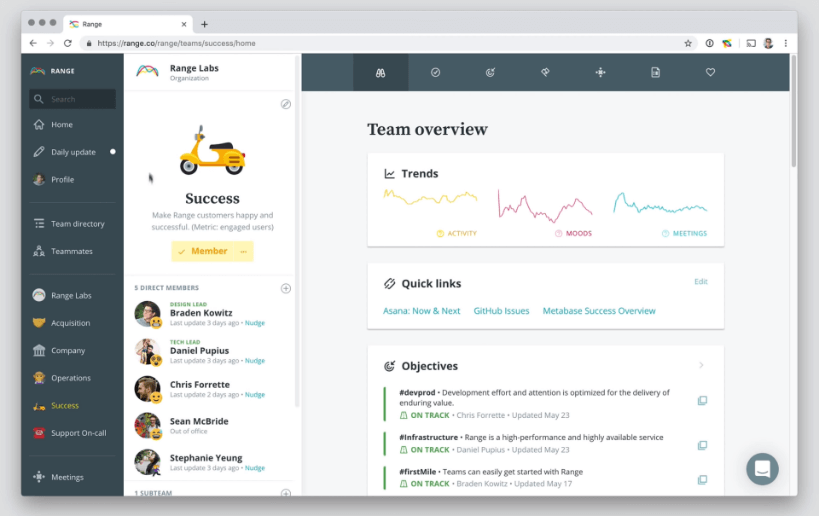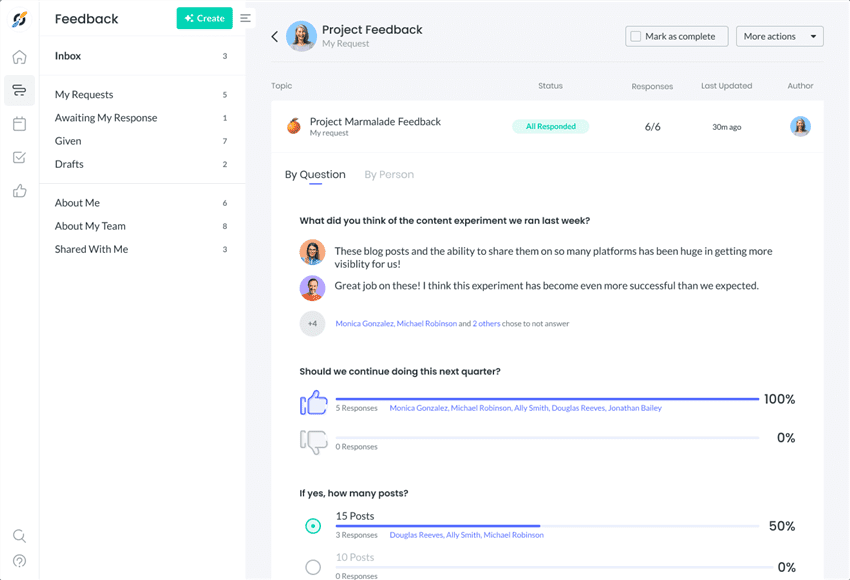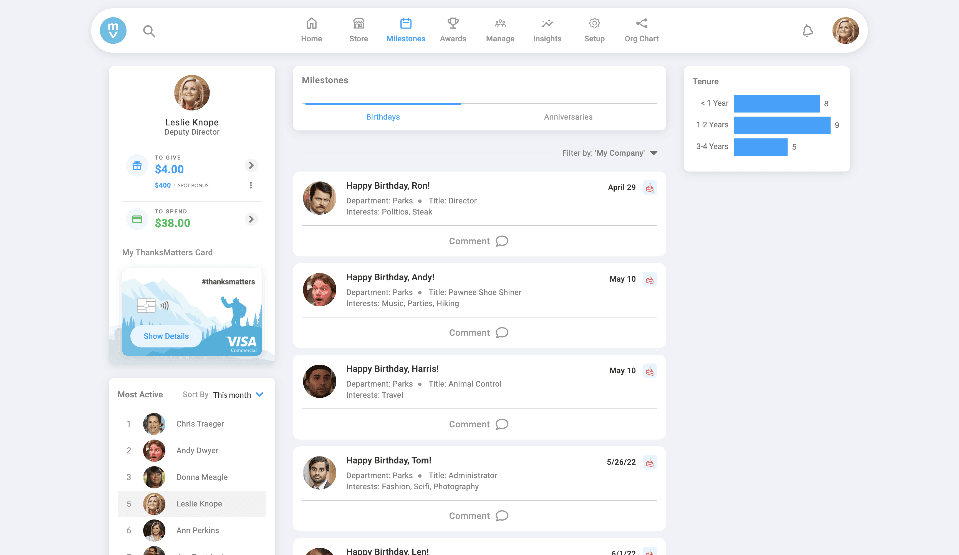Corporate meetings can be quite formal and restricted affairs, where many participants are holding back their opinions and trying to avoid offending their bosses. While this is completely understandable, team leaders need to learn how to break the ice and make everyone more comfortable before serious business can be discussed.
Check-in questions are a great way to see where things stand and how team members feel about the current status of the project. This can improve team meeting management productivity. Such questions can fall into several categories, and the manager can choose the ones that best fit his style and the type of project that is currently underway. With just a few smartly formulated queries, it can be possible to set the meeting on the right course and ensure that it will be productive and lead to actionable conclusions.
20 Check-in Questions for Meetings
Here are some examples of great check-in questions a manager can ask in a meeting to find out all important details about the tasks being completed, general mindset of the team, outstanding issues that are impeding progress, etc.
- Is there anything urgent related to the current project that I need to know about?
- Have we solved the issue that we discussed in the previous meeting and planned to fix it by now?
- Is any team member struggling to understand his assignments or having trouble completing them?
- Who has some extra time to take on a new task that we unexpectedly have to deal with?
- What is the biggest remaining obstacle standing in the way of successful project completion?
- Which resources are you missing now that would enable you to complete the given tasks better?
- Do you have a suggestion for an alternative approach to the project that would help us save time or resolve a persistent challenge?
- Does anyone want to share an inspirational story that applies to the situation we are facing?
- Which word or expression do you think best describes the mood of the team today?
- How would you characterize your own performance over the previous week?
- If you were charged with making key decisions, what would you do differently on this project?
- Do you feel confident that the company and management are doing all they can to help you?
- Which surprises could affect our plans and cause the project to run over budget or be late?
- Can you define your current energy level on the scale from one to ten?
- Are there any old, uncompleted tasks that we repeatedly delayed but will eventually have to finish?
- Which factor is responsible for the largest percentage of time wasted for the entire team?
- Which professional skill have you been working to improve in the previous period?
- At what time during the day are you feeling most productive and capable to contribute?
- How do you typically motivate yourself to work harder and accomplish more on your current job?
- Are you noticing any signs of excessive stress or burnout and if yes, what do you think is causing it?
Best Check-in Software for Team Collaboration
Organizations that hold daily check-in meetings to facilitate more effective collaboration within their project teams can greatly benefit from using the right software solution to assist in this regard. There are several excellent project management and team collaboration software products that deserve to be considered, and some of them can be used to prepare questions for check-in meetings, share them in advance, and conduct daily interactions remotely.
Range

Range Interface
This convenient software is ideal for companies that like to maintain a dynamic atmosphere through frequent stand-up meetings. It doesn’t matter if team members are located far away from each other or even if they are online at the same time. Range allows team managers to stay flexible while still hitting all of their targets and keeping the team in great spirits.
Relevant features:
- Specialized software suite that lets organizations hold asynchronous check-in meetings
- Team members can be notified about a check-in through Slack or e-mail
- Meetings organized with this software take up significantly less time and effort
- Everyone can react to check-in questions directly with text, images or emojis
Known drawbacks:
- Failure to properly tag items can lead to inaccurate reports
- This software doesn’t include a good option for note-taking during meetings
Pricing: Free for up to 12 users, the Pro plan costs $8 per user
User feedback:
- G2: 4.6 (74 reviews)
- Capterra: 4.7 (32 reviews)
Fellow

Fellow Interface
With a team collaboration software created purposely to simplify all kinds of professional meetings, smart managers can conjure a much higher productivity level. Fellow lets businesses handle all of their communications and interactions through a platform that contains a plethora of very practical tools. Regular use of this software helps to establish great team relations and build a culture of efficiency.
Relevant features:
- Software solution equipped with useful tools for every phase of meeting preparation
- Agendas can be distributed ahead of the meeting and can include check-in questions
- All action items can be assigned directly to responsible individuals during a meeting
- Participants have a way of providing feedback about the meeting in real time
Known drawbacks:
- Better linking between notes and searching through them would be useful
- It’s not possible to standardize the text formatting for a particular meeting
Pricing: Free for up to 10 people, Pro package is priced at $6 per month
User feedback:
- G2: 4.7 (1473 reviews)
- Capterra: 4.9 (32 reviews)
Motivosity

Motivosity Interface
While most enterprise software products prioritize company interests, this one puts the employee and his needs front and center. Any organization that adopts Motivosity can expect a more satisfied, more productive, and more loyal workforce. Even more importantly, employees mostly enjoy using this software so it won’t take long for its effects to be felt.
Relevant features:
- Innovative, worker-centric software that is unmatched as a connection-building tool
- Social network style of communication that makes it easier to get to know colleagues
- The app provides a conduit for inquiring about employees’ opinions and emotions
- Employee recognition system helps to keep motivation at a high level
Known drawbacks:
- The only languages supported are English, Spanish, and French
- The app lacks sufficiently sophisticated reporting features
Pricing: Basic product costs $2, with another $2 paid for each additional module
User feedback:
- G2: 4.7 (951 reviews)
- Capterra: 4.8 (958 reviews)
FAQs about Check-in Questions
Which types of check-in questions are suitable to use in a business meeting?
Depending on what response the meeting host wants to elicit from the participants, he could choose one of several types of check-in questions, including strategic questions, practical questions, emotional state inquries, inspirational challenges, hypotheticals, team cohesion tests, or many other types.
Should check-in questions be directed at specific employees or at everyone present in a meeting?
Both of those approaches could be fruitful, and they can be used in combination. An opening check-in question should probably be asked to the entire team and one or more volunteers could answer it. A follow-up question could then be directed towards a person that the manager might be concerned about or specifically wants to activate.
At which point during the meeting it makes the most sense to ask check-in questions?
Check-in questions are best suited for the beginning of the daily stand-up, or the intermezzos between two segments of a longer meeting. They shouldn’t be mixed with parts of the meeting that are dedicated to planning or discussing particular activities in order to keep a clear distinction between tone-setting questions and actionable items on the agenda.
Final Thoughts
Communication is a two-way street and managers who know how to ask the right questions are often rewarded with honest and productive answers. There are countless ways for team leaders to use check-in questions to steer meetings in a direction of their choice or address a latent issue that might be bubbling under the surface. Of course, practice makes perfect and those who continuously try to refine their ability to formulate relevant questions tend to get better over time. Using the right collaboration software can accelerate this process and help the team become more united quickly.



